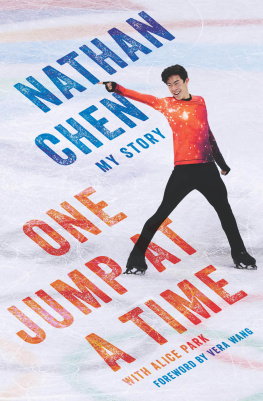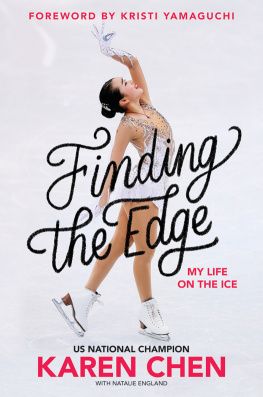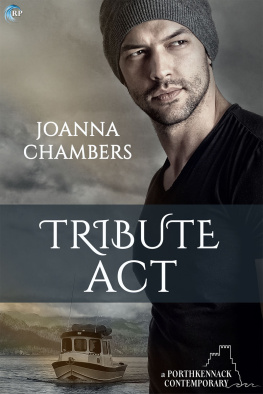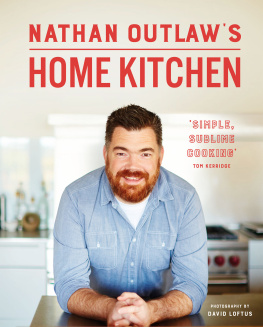
Nathan Chen
What can one say about someone who, at such a young age, has achieved so much, and with such humility and grace? For me, as a Chinese American, and ironically, an excompetitive figure skater myself, Nathans journey seems all the more admirable, if not astounding!
As Americans, we have a long and storied history of World and Olympic figure skating champions; however, as is true with so many other disciplines, our sport had to evolve for so many reasons, and on so many different levels. Nathan brought that other level by helping to create an entirely new hypothesis for competitive skating with jumps we could never have dreamt of, and his own particular brand of effortless, almost casual style so unique and captivating in its nonchalance and originality. But this is not only a story about athletic achievement; it also represents a very personal tale about growing up in a large, boisterous, irrepressible family, with strong traditional Chinese values juxtaposed within a cultural norm of enormous freedoms, unlimited possibilities, and the relentless quest for change that so defines American culture. For these many reasons, Nathans story is so unique.
Skating is a deceptive sport. The enormous toll it takes on both mind and body is incalculable, and the training and discipline it requires so imperceptible, that what often appears effortless actually defies physics. This is not a pastime for the faint of heart, nor is it an inexpensive pursuit.
And, as is so often the case, achieving anything, particularly Olympic gold, can be an extremely lonely pursuit and involves great sacrifice. Nathans dream, I am certain, did not materialize all at once, but in Salt Lake City, where he was born and where the Olympics were held in 2002, so something about that Olympic magic must have intrigued him early on. In his case, his prodigious talent, passion, and drive all helped to create a future champion.
Our first meeting was at the Carlyle Hotel in New York City, on a cold, rainy winter day in 2017. It was just us; his mother, Hetty; and his agent, Yuki. I had by then dressed some of the most amazing Olympians and was fearful I could not come to the table yet again with the amount of thought, creativity, and innovation necessary to dress another celebrated champion. That responsibility can be daunting.
Nathan was also on the verge of exploding onto the global stage, and beginning to explore his own sense of style, intent on performing in something cooler, looser, hipper, very contrary to the body-conforming costumes so typical of competitive looks in the past. During lunch, as I was trying to coax him out a bit, I initiated a whole other line of conversation. What do you want to do after skating?, something that might seem odd to ask a future champion in the making. I had seen so many incredible athletes ponder this eventuality, after devoting their entire youth to such a singular goal. So my very existential question was sort of my way of getting to know him. Without a seconds hesitation, he said college, and in that moment I knew immediately who he was, and exactly how far reaching his ambitions lay. He had a plan B, and as it turned out, that became Yale. Yale got lucky, as did the world of figure skating!
To be perfectly transparent, I wasnt sure I could interpret Nathans creative impulses, and he did push me out of my comfort zone, politely at first, but steadfastly, as time went on. One has but to see the very obvious evolution from our first costumes to those of the 2022 Olympic season. I cant wear a one piece and perform that many quads. So it was really Nathan who educated me as to the amount of freedom he needed to perform at that level, while it was up to me to bring a creative edge to his technical concerns and ever evolving aesthetic. Interpreting a skaters program, choreography, and unique style is a complex exercise to begin with, but standing out at the Olympics can be even more challenging.
His courage in establishing his own boundaries not only in how he dressed but how he changed the sport technically and creatively represents a tale of singular determination mixed with equal parts humility, self-examination, and intelligence.
Ultimately, to be able to forge your own path, despite any odds, and to achieve at such an elite level without forgetting where you came from, or those who helped you along the way, that is what truly defines a champion. These are perhaps Nathans truest accomplishments, and unlike most biographies, this is perhaps only the first chapter!
I am so proud to have played but a small part in this story but look forward to all I believe he will continue to contribute to the world. Nathan, thank you for bringing your own standards of excellence and magic to a sport we all love and adore. You have also laid a credible foundation for young people everywhere, while helping to support Asian Americans at such a significant moment in our history.
Vera Wang

Vera Wang and Nathan at the Figure Skating in Harlem 25th Anniversary Gala at Gotham Hall in April 2022.
Udo Salters Photography
My skating career has always been intimately tied to the Olympics. I took my very first, tentative steps on the ice at the practice rink for the 2002 Salt Lake City Winter Gamesthe same rink where figure skating legends like Michelle Kwan and Sarah Hughes practiced their programs before they had Olympic medals hung around their necks. The practice rink was located in the Salt Lake City Sports Complex, which the locals call Steiner, and every time I skated there, I couldnt help but feel the Olympic spirit. The rings were everywhere, and there were graphics of the Olympics, like a huge picture of speed skater Apolo Ohno, all around.
I cant remember ever not thinking that skating would bring me to the Olympics. Right from the start, I associated skating, and being an athlete, with the Games. Im sure a lot of that had to do with the fact that when the Games were held in my hometown in February 2002, I was two years old; so growing up, it was impossible to avoid getting caught up in the excitement that the Olympics inspire.
My mom took a picture of me with my two brothers in front of the Olympic cauldron at Rice-Eccles Olympic Stadium, and you can see the Salt Lake 2002 motto, Light the Fire Within, and the flags from the participating countries flapping in the breeze. Salt Lake City, especially then, was a very Olympic-driven town. Growing up there cemented in my mind the idea that being an athlete meant you went to the Olympics: to be a skater was to be an Olympic skater.
My mom is a big sports fan, so not long after I started skating, my family, like so many others, watched the 2004 Summer Olympics on television. It was the year Michael Phelps won six gold medals. Watching Michaels accomplishments in the pool, and especially the shiny hardware around his neck, must have made an impression on five-year-old me. The day after seeing one of his medal ceremonies, I decided to create my own version of the Games at the rink. At Steiner, there is a door that opens to let the Zamboni drive on and off the ice and looks toward a huge flag of the USA. My mom says I stood by this door and started singing the national anthem. When she asked me what I was doing, I told her I was pretending I had won a gold medal, so naturally I had to sing the anthem.













